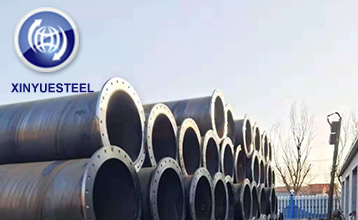Some users are speeding up replenishment, and coal prices are not likely to fall for the time being
Jun. 28, 2021
The domestic coal supply quantity and the total amount of imported coal are still weaker than the consumption level, and there is still a slight supply and demand gap in the coal market; some users insist on not to increase or reduce the price of coal, resulting in large-scale replenishment of downstream terminals. Ships anchored in Bohai Rim ports remained at a median level, and the number of days available for terminal power plant inventories continued to remain low.
In terms of production areas, coal prices have been frequently raised in production areas recently, and the contradiction between market supply and demand is still prominent. With the approaching July 1st and the shortage of coal pipe tickets, a small number of coal mines have suspended or reduced production, and the supply of pitheads has become tight. At present, the downstream terminal replenishment is active, the station leader Concord’s direct delivery situation is good, and coal mine sales are in short supply. Port coal quotations continued to rise. The quotation of low-sulfur coal in the north of Shanxi Province has been increased to 1,050 yuan/ton. Some cement and chemical companies are more active in inquiring about goods, and some users can accept high coal prices.

Recently, coal mine accidents have occurred frequently, and safety supervision policies of production areas have been intensively introduced; coupled with the approaching "July 1", safety and overproduction inspections are under high pressure, and it is difficult to increase significantly on the supply side. Power plants focus on rigid demand and will not carry out large-scale rush shipments for the time being. This has indeed not brought the coal price to a high level, but inquiries from users have appeared from time to time, causing the coal price to fail to fall at all. It is expected that coal prices will continue to rise this week. In the short term, due to the lack of agreement between the supply and demand parties on the price issue, the stalemate has prompted the coal market to maintain a tight supply and demand pattern; the launching of coal at Bohai Rim ports is mainly based on long-term cooperation, and the situation of low terminal inventory is temporarily eliminated. solution. At present, the entire Bohai Rim port inventory has decreased by 130,000 tons per day, of which Caofeidian Port inventory has fallen rapidly. Based on the analysis of coal storage in power plants in eight coastal provinces, compared with a month ago, the amount of coal stored in power plants has only increased slightly by 1.6 million tons; however, due to the rapid increase in daily consumption, the number of days available for coal storage has remained unchanged. As Daqing approaches the century, the supply of coal mines in the producing areas has shrunk, and coal mines in some areas have been suspended for maintenance. Shippers expect that coal prices may still rise in the future, and they are reluctant to sell their goods.
In summer, the maximum power load of the major power grids in the south will reach a new high. Once a large-scale continuous high temperature weather occurs, some coastal areas may experience power shortages. According to the higher level’s summer coal storage target requirements for thermal power generation companies, it needs to be before the end of June. , Increase the coal storage of power plants to 15-20 days; it is not easy to complete this indicator. If coal-fired power plants are shut down during this summer, it may directly lead to an orderly power consumption situation. On June 17, the National Development and Reform Commission and the Municipal Supervision Bureau jointly investigated the National Coal Trading Center. At the symposium, it was required to ensure the supply of bulk commodities and stabilize prices; affected by the underpricing policy, power plants imposed restrictions on the bidding price of thermal coal purchases. Long-term cooperation is the main source of transportation, and the willingness to receive high-priced coal is low, and the number of transactions is small. However, some terminals are forced to accept high prices due to high daily consumption and exhaustion of inventory.



